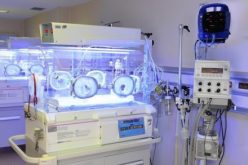Estethica Atasehir

Estethica Atasehir
How it is Performed
Estethica Atasehir, firstly, blood will need to be drawn for HIV and Hepatitis C testing. This is done in order to protect the nurses, surgeon or anyone else involved in the hair transplant. Once the blood test part is over, you and your surgeon will decide on the new hairline you want and discuss the overall procedure – this is a very important discussion as it will determine your future look.
The next stage is shaving your head. This is done in order to improve the accuracy of the surgeon and to allow him to see your skin. Local anaesthesia will be administered through small injections around the area where the surgeon will work. Once the anaesthesia kicks in, the surgeon will begin harvesting hair grafts from the donor area. You won’t feel a thing during this part of the procedure.
When the grafts harvesting is over, the surgeon will make tiny incisions in the receiving end of the skull and start putting the now harvested grafts in place. Once this part of the procedure is over, the surgeon will use a bandage to prevent infection and stabilize potential bleeding.
The day after your procedure is done, you will be required to come back to the hospital for a simple checkup. The doctor will take off the bandage and check the scalp for any problems or discomfort. The hair will then be washed and rubbed with a special lotion that will strengthen the newly implanted hair follicles. Estethica Atasehir, Your doctor will then give you advice for the recovery period which lasts for a few weeks – it’s very important to follow his instructions thoroughly as the post-operatory care has a great influence on the overall results of the procedure.
Recommended For
Patients suffering from traumatic alopecia, male pattern baldness, receding hairlines, traction alopecia, and general alopecia can benefit from a hair transplant procedure.
Before You Leave
You will need to send photos from the top of your head, back of the head (this is the donor area) and from the front in order for a hair transplant technician to estimate how many grafts are needed for the procedure.
Preparation
1 week before surgery you need to stop taking medications like herbs and supplements (Gingko, Glucosamine), vitamins, anti-inflammatory medicine (e.g. Advil, Motrin), aspirin (ASA), soft drugs and alcohol. Please read the labels on the medications you are taking as aspirin may be an ingredient.
Recovery
Take pain medication, sleeping pills and antibiotics as prescribed. Do not rub or scratch the sutured area and be careful when examining the grafted area. Do not use a hair comb or a brush. Sleep, rest or simply watch television for the remainder of the day. Do not put any pressure on the grafted area.
Wait for at least 24 hours before washing your hair. When washing your hair, use a very gentle water stream with lukewarm water and gentle hands but be careful and do not use hot water. To dry your hair after washing it, use the cool air setting on a hair dryer or pat your head very lightly with a towel. Vitamins like B Complex (2 tablets daily) and Vitamin E (1 tablet daily) can help strengthen the hair and help with nerve regeneration, if used regularly. By following the above mentioned guidelines, the success rate of the treatment is greatly improved and potential complications are limited to a minimum.
Anesthesia
Local anesthetic
Hospital Stay
Overnight stay is not required
Number of Trips Abroad
1 trip usually
Back to Sports
1 week after the surgery
Duration of Operation
Operation takes 4 to 12 hours
Minimum Stay
Minimum 2 days stay in Istanbul
Back to Work
3 to 7 days after the surgery
Related Articles
Write a Comment
Only registered users can comment.












